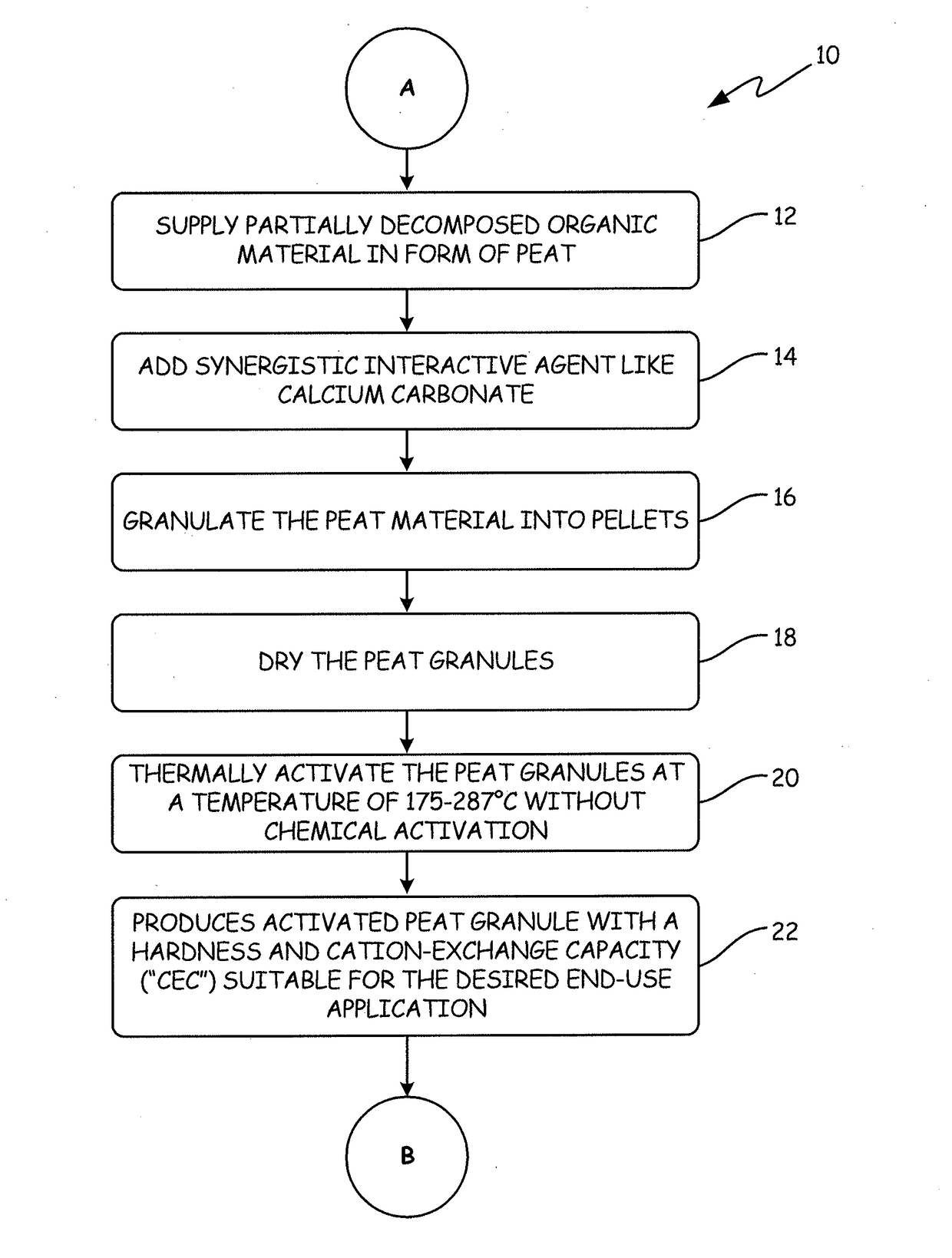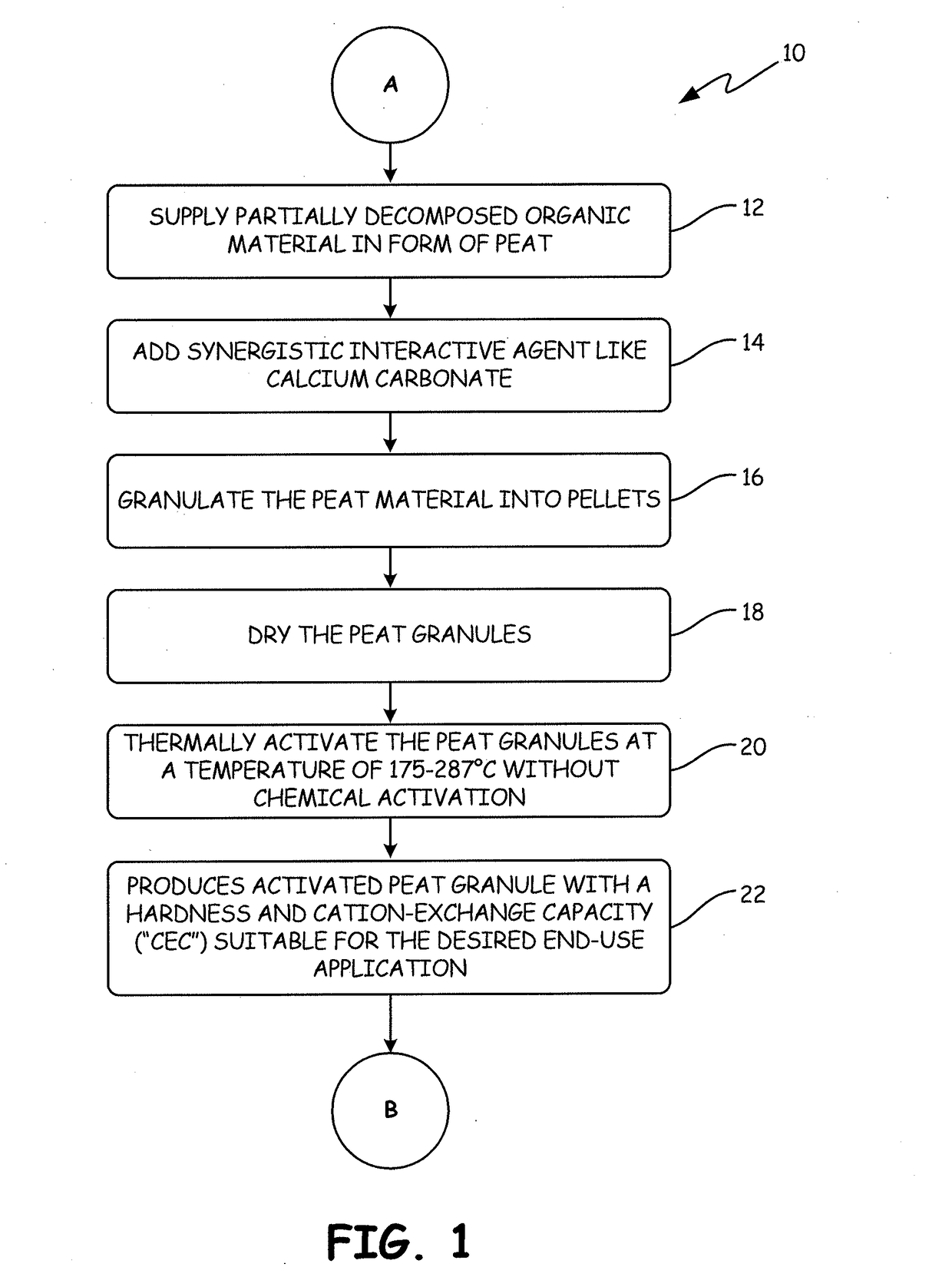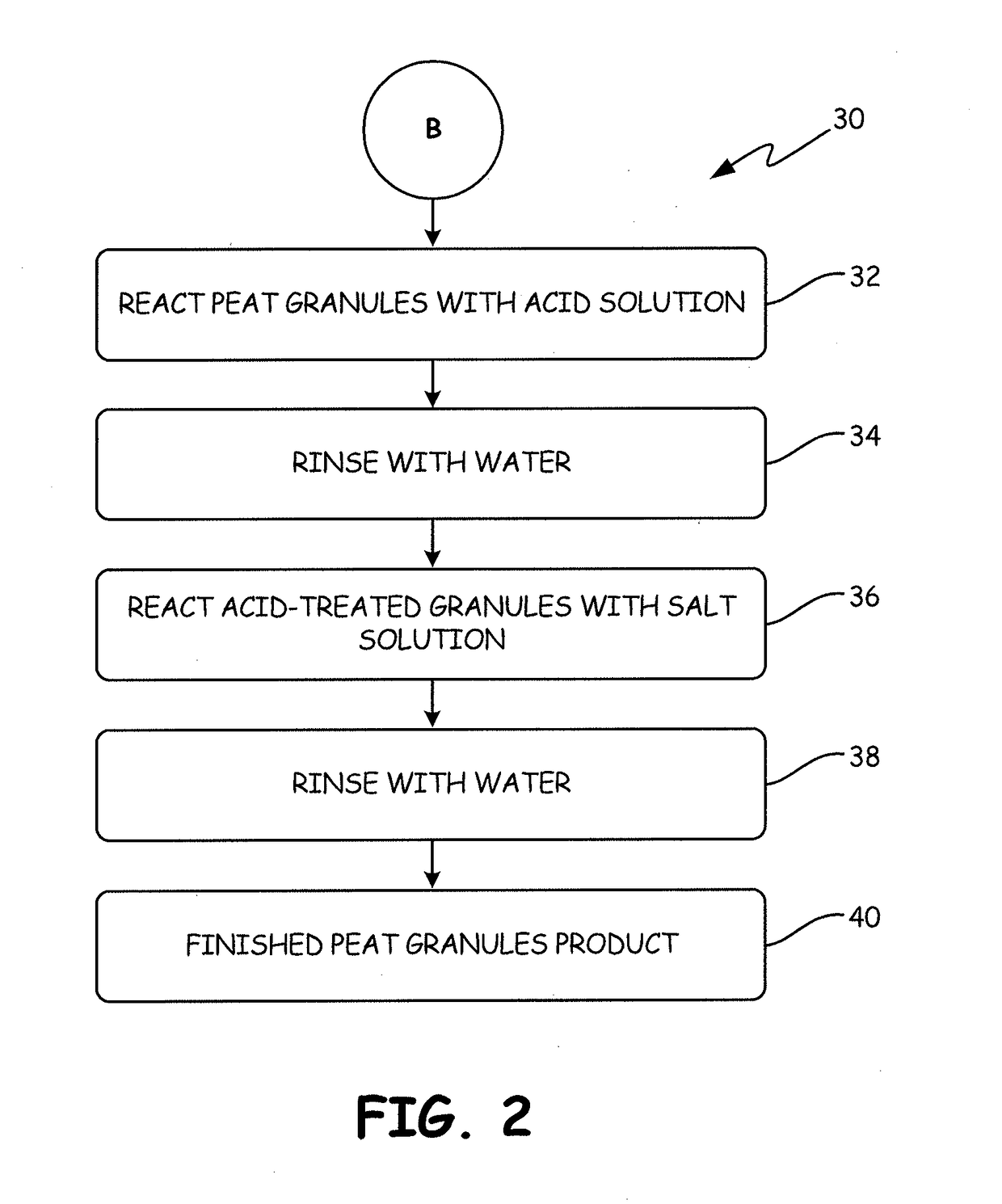Particulate medium prepared from partially decomposed organic matter for selective sorption between competing metal ions in aqueous solutions
a technology of organic matter and aqueous solution, applied in the direction of ion exchangers, water/sewage treatment, water treatment water, etc., can solve the problems of reduced mental and central nervous function, reduced energy level, toxic, etc., to increase the availability of naturally occurring active sites, increase the degree of granule or pellet hardness, and enhance the effect of ion exchang
- Summary
- Abstract
- Description
- Claims
- Application Information
AI Technical Summary
Benefits of technology
Problems solved by technology
Method used
Image
Examples
example 1
or Producing Thermally-Activated “APTsorb II” Peat Granules
[0134]
[0135]The APTsorb II peat granule media was prepared using peat of a reed-sedge type commercially available from American Peat Technology, LLC of Aitkin, Minn. The raw peat material was first dried to a moisture content of about 40% wt. Calcium carbonate (2% by weight) was added to raw peat and the mixture was extruded into pellets, dried again to reduce the moisture content to about 12% wt, and finally crumbled and sieved. This process resulted in a multifunctional granular media called “bioAPT.”
[0136]The finished bioAPT peat granule with a size range of 10×30 mesh was then thermally activated to produce the APTsorb II media. The bioAPT granules were introduced into a jacketed ribbon mixer. The mixer had thermal fluid circulating through the jacket at a temperature of about 300° C., thereby effectively heating the atmosphere inside the mixer. Additionally, the mixer ribbons were fitted with “lifters” that picked up th...
example 2
Treatments of the Thermally-Activated APTsorb II Peat Granules to Produce the APTsorb III Peat Granule
[0148]The process used to produce the chemically-treated, thermally-activated sorption medium called “APTsorb III” is illustrated as follows:
[0149]A 2 L volume of a 1N solution of HCl was added to 1 kg of the APTsorb II media at room temperature. The mixture was kept at room temperature for 24 hrs with periodic shaking in such a fashion so as not to destroy the granules. The pH was maintained at a value of 2 or lower. This acid treatment was completed when the concentration of calcium, manganese and other bivalent ions reached maximum concentrations in the solution as determined by the titration procedure described below. The mixture was filtered and washed six times with water or until the test for the presence of chloride ions in the filtrate, as described below, was negative. The volume of combined acid and rinsing solutions was 11 L.
[0150]Following the acid treatment, 5 L of 1M ...
example 3
n Characteristics of APTsorb III Peat Granules
[0158]The APTsorb III peat granules for this experiment were produced by mixing 500 g of APTsorb II material and 1 L of 1 N HCl. The mixture was kept at room temperature for 24 h with periodic shaking, so as to not destroy the granules. After the acid treatment, the media was rinsed with deionized water until the filtrate was free of chlorides as described in the test above. The media was then mixed with 5 L of 1 M NaCl solution and heated. The mixture was held at 90-100° C. for 90 minutes, filtered while still hot, and rinsed until free of chlorides as described above. The treated media was then dried for 24 h at 105° C.
[0159]The adsorption activity of the APTsorb III material was measured by the cadmium equilibrium QC test. Filtrates were preserved and analyzed for manganese and cadmium, using graphite furnace atomic absorption spectrometry. The results are shown in Table 4 below.
TABLE 4Concentration of Mn and Cd after QC test withinit...
PUM
| Property | Measurement | Unit |
|---|---|---|
| temperature | aaaaa | aaaaa |
| temperature | aaaaa | aaaaa |
| temperature | aaaaa | aaaaa |
Abstract
Description
Claims
Application Information
 Login to View More
Login to View More - R&D
- Intellectual Property
- Life Sciences
- Materials
- Tech Scout
- Unparalleled Data Quality
- Higher Quality Content
- 60% Fewer Hallucinations
Browse by: Latest US Patents, China's latest patents, Technical Efficacy Thesaurus, Application Domain, Technology Topic, Popular Technical Reports.
© 2025 PatSnap. All rights reserved.Legal|Privacy policy|Modern Slavery Act Transparency Statement|Sitemap|About US| Contact US: help@patsnap.com



